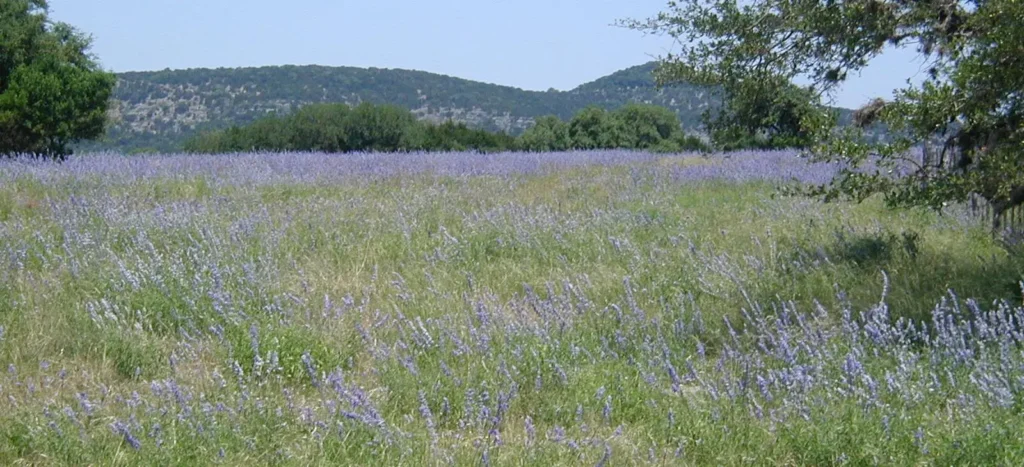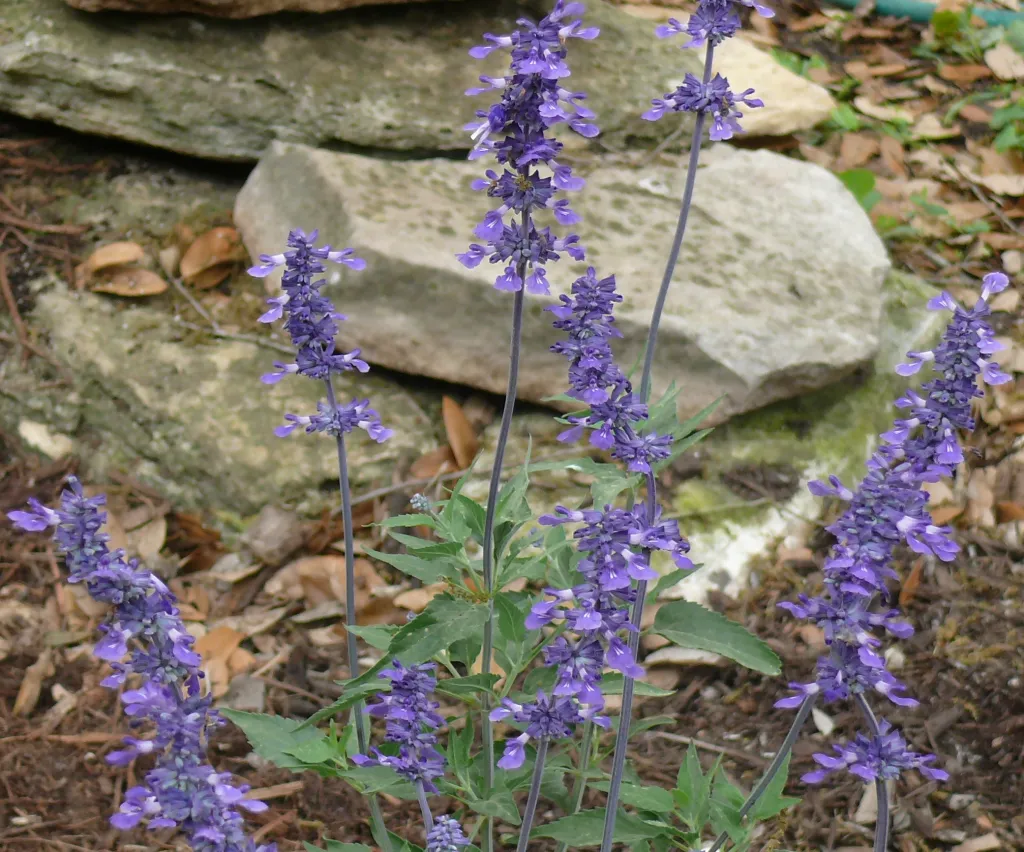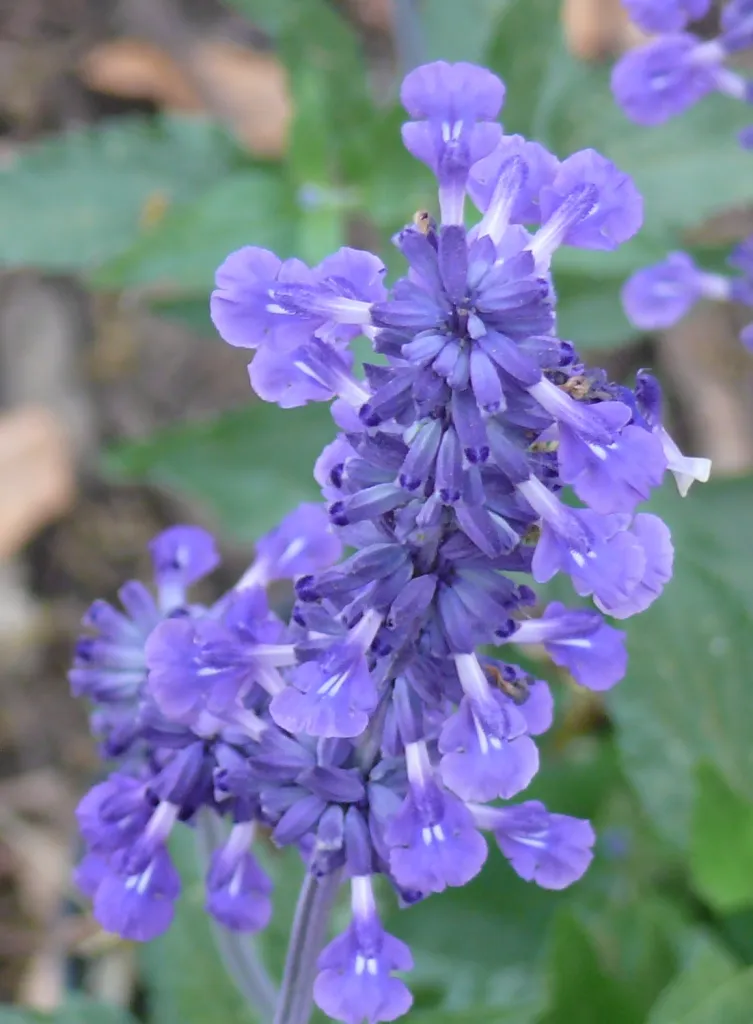Author: Bill Ward
This dry, dry year has given our neck of the woods the scraggliest little bluebonnet patches we’ve have in a long time. But here and there are fields of blue that almost compensate for the failed bluebonnet crop. These are blue patches of the tough little mealy sage (Salvia farinacea).

Mealy sage is the Operation NICE! (Natives Instead of the Common Exotics!) selection for May. This is a long-blooming, drought-tolerant, deer-resistant perennial, widely available in nurseries. A perfect NICE! plant.
This blue-flowering sage usually is no more than three high. It grows in clumps of several stems with medium-green lance-shaped leaves. Whorls of violet-blue blooms are borne on the end of stalks that rise above the leafy part. The flowers appear to be dusted with fine white powder. Actually, this appearance comes from a dense cover of matlike wooly hairs tinged with white, blue, or violet. The common name “mealy” and the scientific name “farinacea” are derived from this farinose (mealy) look of the flowers.

Local nurseries may have cultivars of Salvia farinacea that are darker-blue or even white. One robust good-bloomer recently available is a selection called “Henry Duelberg.” Mealy sage starts blooming in April and blooms until a winter freeze. Hot, arid summers bring a decline in flowering, but revived blossoming comes back with fall weather.
Mealy sage is widespread across the Hill Country. It grows in well-drained, sunny areas in limestone soils. Undoubtedly it is drought- and cold-tolerant in the wild. Once established in a home landscape, it requires minimal care. Several people in my neighborhood use mealy sage as a border plant. Reportedly, it is a good plant for pot gardens.
The Boerne Chapter of the Native Plant Society of Texas provides free planting and care instructions for mealy sage at nurseries participating in Operation NICE! (Barkley’s Nursery Center, Hill Country African Violets and Nursery, and Maldonado Landscape and Nursery).
What’s blooming this month?
Despite the extremely dry soils in our part of the Hill Country, our backyard has started to bloom during April, more every day. Today’s flowers include:

Blue/purple: mealy sage, prairie verbena, bluecurl, bluebonnets, Engelmann salvia, Lindheimer morning glory, Texas vervain, bluet, wine cup, purple milkweed vine, fox-glove penstemon, and Salvia guaranitica (South American).
Yellow: Engelmann daisy, Texas green-eyes, huisache daisy, zexmenia, slender-stem bitterweed, greenthread, damianita, parralena, two-leaf senna, columbine, false nightshade, prickly pear, and straggler daisy.
Orange: scarlett pimpernel and lantana.
Red: cedar sage, scarlet penstemon, Salvia greggii, and Indian pink (East Texas).
Pink: evening primrose, prairie phlox, purple coneflower, limestone guara, fox-glove penstemon, and orchid tree (northeastern Mexico).
White: blackfoot daisy, Anacacho orchid tree, antelope-horns milkweed, fox-glove penstemon, white honeysuckle (gaura), black cherry, crow poison, Salvia greggii, ox-eye daisy, and water lily.
